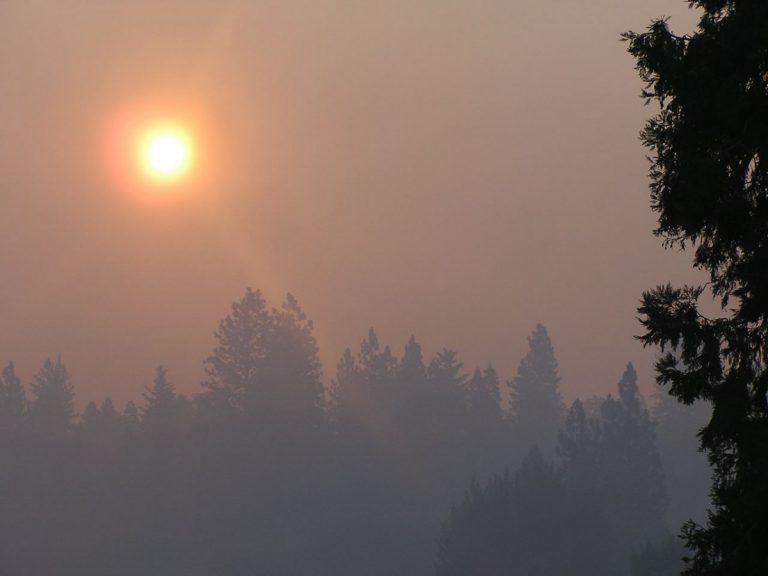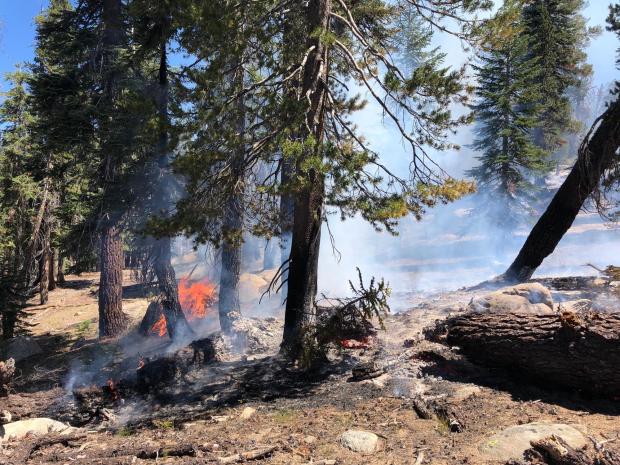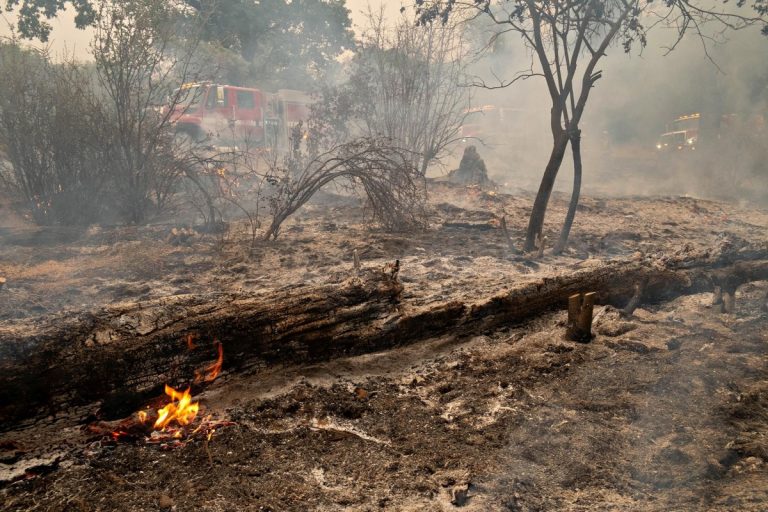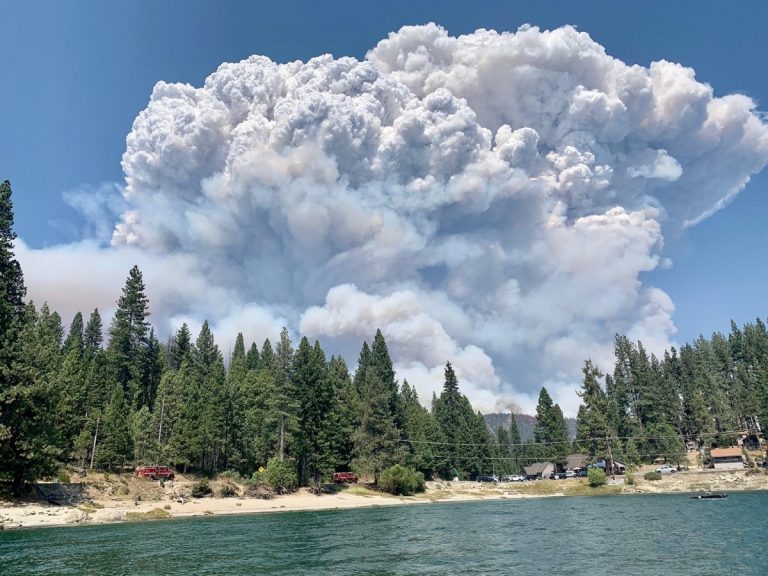As large wildfires spread across the West, smoke plumes often rise high into the atmosphere, sending toxic air far from the fire’s origin. As you look out your window you may still be seeing the thick blanket of smoke that has covered California from coastal cities to the Sierra Nevada; but the smoke doesn’t stop here. Smoke plumes from California fires have travelled across the country and have even been pushed to England.
The fine particles that make up wildfire smoke can travel across vast distances. As smoke travels through the atmosphere and mixes with hot temperatures, it can become more toxic as it “ages”. People with diabetes, heart and lung disease, asthma, the elderly, young kids, and pregnant women are especially susceptible to the harmful effects of smoke inhalation. However, even healthy people can feel the harmful effects that toxic air has on the lungs.

There are air quality monitoring stations across California. Air Quality Index (AQI) levels are considered to be unhealthy when they spike above 100 and are deemed to be hazardous to health when over 300 - according to the EPA. At 1 p.m. on Tuesday, September 15th, the AQI in Oakhurst reached an exceptionally high EPA rating level of 640 particulate matter (PM2.5). Tuolumne County has had AQI levels well over 305 EPA PM2.5 AQI. The PurpleAir air monitoring website has shown daily air pollution levels of 350 at Twain Harte and Sonora and as high as 431, while AQI levels in Groveland have been as high as 489.
No one should be consistently exposed to these levels of toxic air. By staying up to date on your local air quality reports, you can hopefully minimize your exposure. The PurpleAir map is one easy-to-use tool to keep you updated on smoke levels and air quality in your area: https://www2.purpleair.com/.
In contrast to the highly polluting smoke created by out-of-control wildfires, most prescribed burns produce far lower levels of smoke and pose far less health risk. The Blue Jay Fire in Yosemite National Park - as seen in the photo below- has been allowed to burn for two months or more by the Park Service. This is a ground level fire that grows slowly as it creeps across the forest floor, making its smoke production levels low. The spread of this fire is also being slowed through Park Service fire management techniques that minimize impacts on the environment. When our forests are healthy, low intensity fires such as the Blue Jay Fire and others that are currently burning in Yosemite can be allowed to burn with little threat to people, wildlife, or scenic values. Such managed wildfires produce minimal to moderate levels of smoke, and they benefit the forest ecosystem by consuming years of accumulated fallen logs, pine needles, branches, and other fuels that might otherwise burn intensely in a wind-whipped high-severity wildfire.

Unlike the carefully managed, low-intensity Blue Jay Fire, the out-of-control Creek Fire has spread rapidly and destructively across a vast area of public and private forest lands over the past two weeks -- scorching most of the forest in its path. This fire burns thousands of acres a day, which produces huge, dense smoke plumes and destroys valuable habitats and communities.



